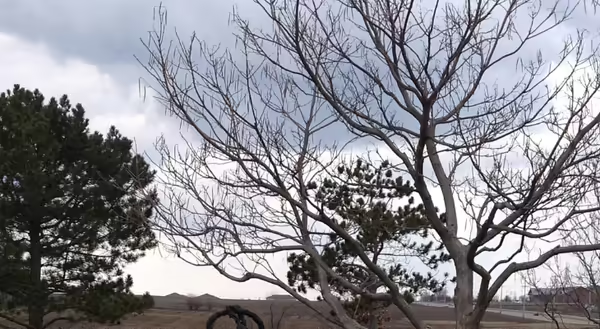
Trees are vital to our environment, and understanding their biology can help us to protect them from stresses caused by the urban environment, extending their lives and promoting their health.
The average components of the tree consist of 5 percent fine feeder roots, 15 percent larger transport roots, 60 percent trunk or main stem, 15 percent branches and twigs, and 5 percent leaves (hard to believe on a fall day).
Roots
- 99 percent of the roots are usually found in the top 3 feet of soil.
- The surface area of the root system, obscured by the soil, can be greater than the surface area of the leaves.
- Nearly all tree roots are associated with mycorrhizae fungi, with which the tree has a symbiotic relationship, increasing the absorptive surface of the finer roots by a hundred times or more.
- Four to 11 major, woody transport roots originate from the base of the tree trunk and grow horizontally. Their points of attachment to the trunk are usually near ground level and are identified by a marked bulge of the tree trunk.
- Transport roots extend four to seven times beyond the area described as the “drip line” of the tree, the area beneath the crown of the tree that receives runoff from rainwater.
- New roots form rapidly after injuries, so the population and concentration of roots in the soil are as dynamic as the population of leaves above.
- Roots transport water to the leaves through conductive tissue called xylem, and leaves transport carbohydrates (made by photosynthesis) through tissue called phloem.
Leaves
- Water is pulled from the roots to the leaves through a process called transpirational pull, explained by osmosis and the cohesion-tension theory of water.
- Stomates (openings on the undersides of the leaves) allow for evaporation of 97-98% of the water. Stomates need to open to allow in carbon dioxide and release oxygen in the photosynthesis process.
- Leaves use chlorophyll (green photosynthetic pigment), sun, carbon dioxide and water to produce carbohydrates (food) and oxygen.
- In the fall, when the temperatures cool and nights get longer, chlorophyll stops being produced, allowing other pigments turn the leaves different colors.
- Although trees remain dormant during the winter, they are not invulnerable to dry conditions, and the lack of water does damage root systems. Continue to water regularly until ground freezes, a couple times a month if there is no precipitation.